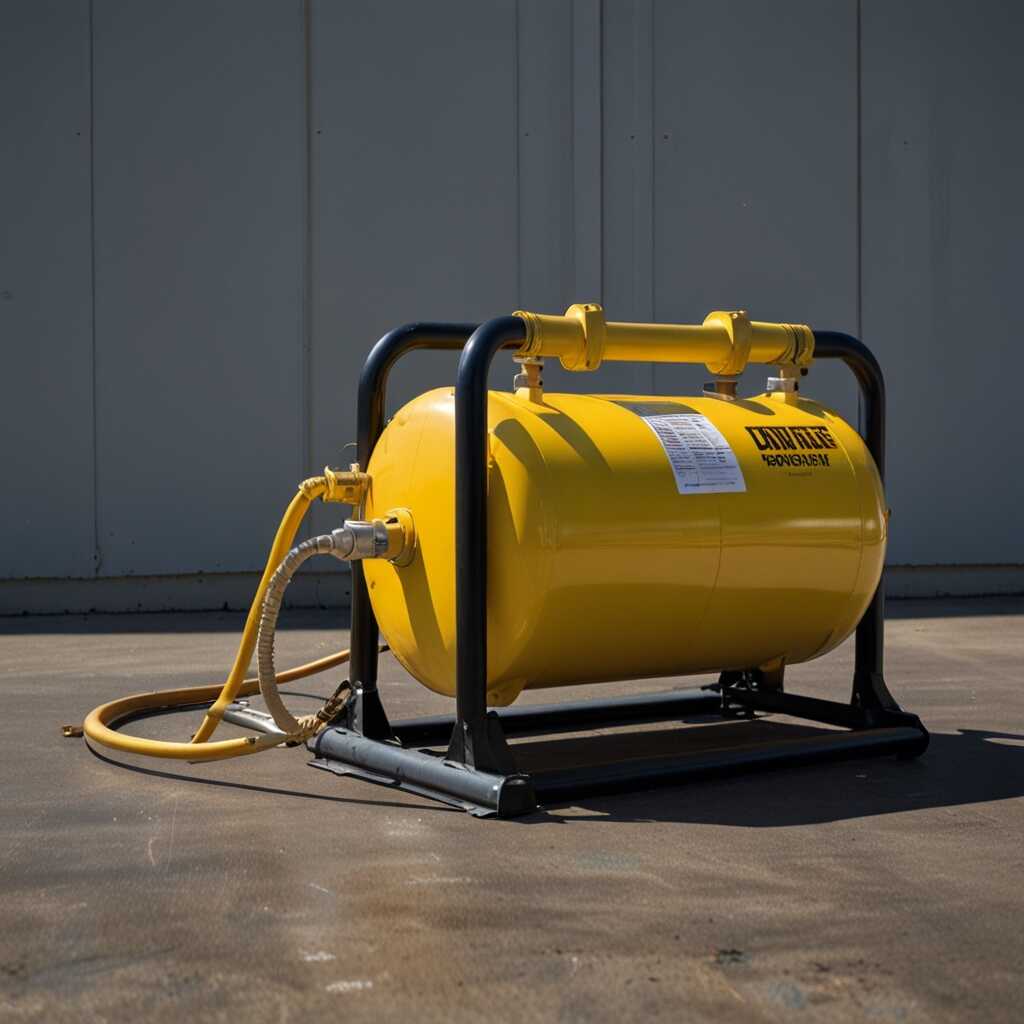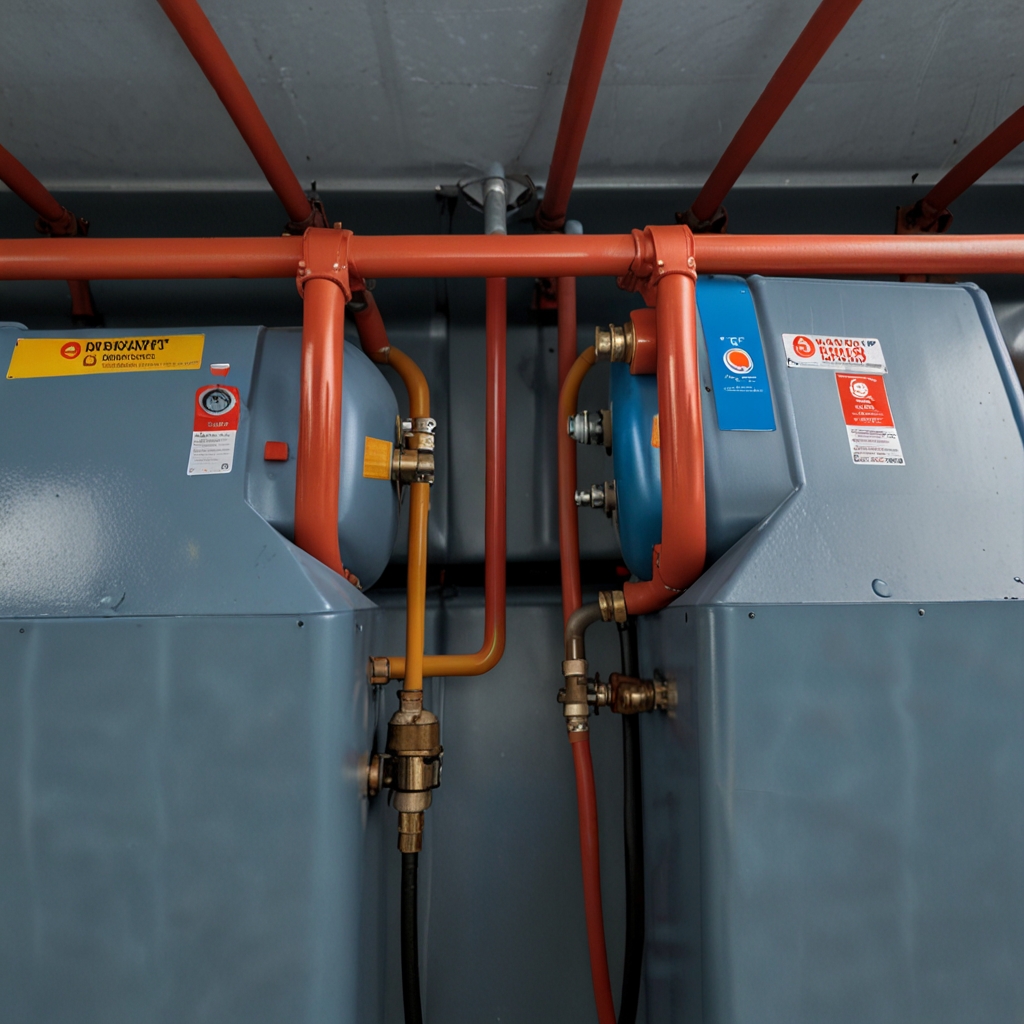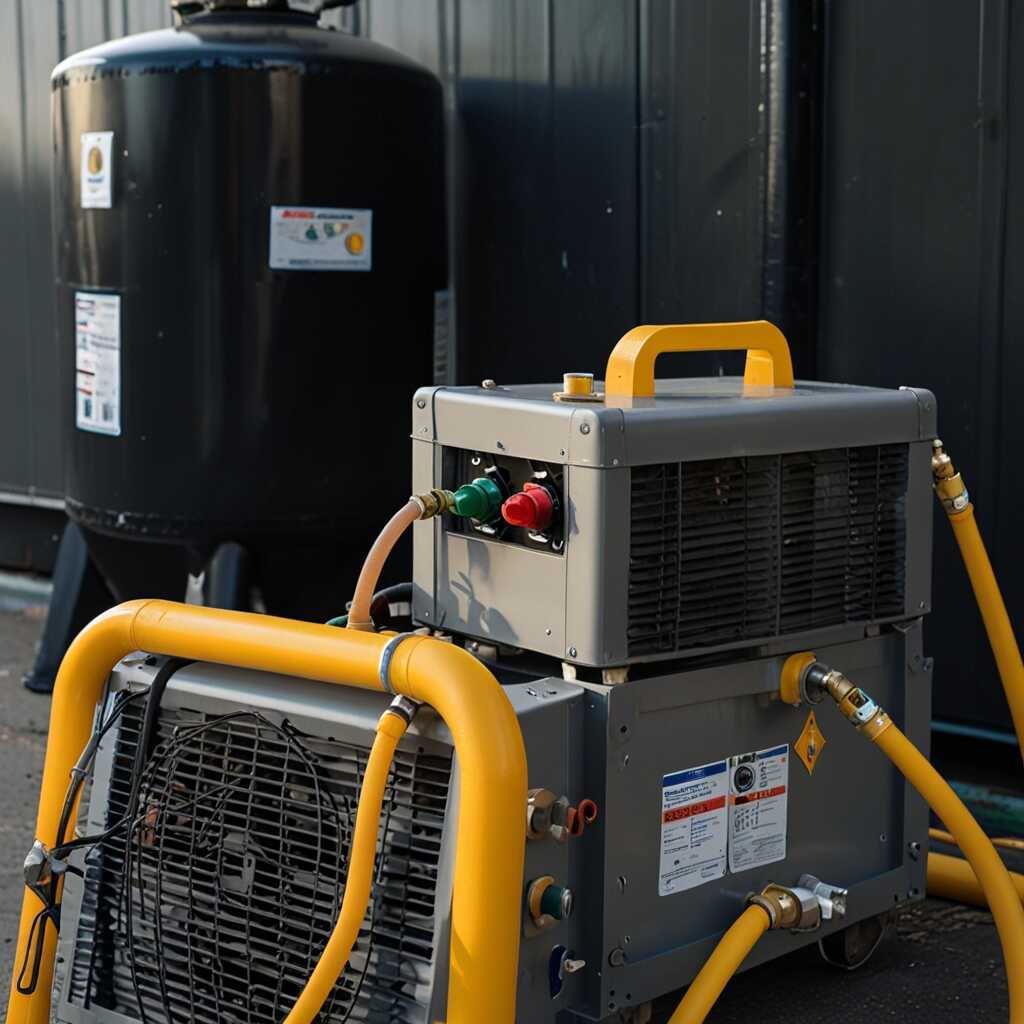Refrigerant recovery machines with automatic oil separation deliver significant benefits for HVAC professionals. These machines enhance operational efficiency by streamlining refrigerant management while ensuring compliance with environmental regulations. Refrigerant Recovery Pro highlights the importance of these machines in reducing costs and improving recovery processes in the HVAC industry. With expert insights and technical support, our team guides users in selecting the best equipment for effective refrigerant management.
Overview of Refrigerant Recovery Machines and Their Functions
Refrigerant recovery machines serve as crucial tools for HVAC professionals, enabling the safe removal and storage of refrigerants during maintenance or repairs. The main components of these machines include the compressor, condenser, evaporator, and various valves. They work by creating a vacuum to draw refrigerant from the HVAC system. Automatic oil separation features streamline the process, allowing for simultaneous extraction of refrigerant and oil, thus improving efficiency and ensuring environmental compliance. Typical recovery rates can reach up to 99% for efficient machines, significantly enhancing overall refrigerant management strategies in compliance with industry regulations.
Key Features of Refrigerant Recovery Machines
Refrigerant recovery machines with automatic oil separation include features designed to enhance their efficiency and reliability. These features often encompass user-friendly interfaces, built-in refrigeration monitoring systems, and optimized compressor designs. The automatic oil separation ensures compatibility with several refrigerants, improving performance in diverse applications. Data-driven performance metrics allow technicians to monitor recovery rates effectively. Manufacturers such as Refrigerant Recovery Pro focus on providing durable machines that can handle various refrigerant types while achieving fast and efficient recovery under varying conditions. This design ensures HVAC professionals can rely on them for compliance with regulations and cost-effective refrigerant management.
Understanding the Importance of Oil Separation
Oil separation plays a crucial role in refrigerant recovery. It enhances the reliability of recovery systems by removing contaminants that can damage components. Proper oil management during recovery helps maintain system efficiency. Studies reveal that effective oil separation can extend the lifespan of HVAC systems, reducing repair costs significantly. A recovery machine designed with automatic oil separation technology can easily manage varying quantities of oil while efficiently recovering refrigerant. This enhances the entire recovery process, ensuring environmental compliance and better performance.
How Oil Separation Technology Improves Efficiency
Oil separation technology is essential for improving refrigerant recovery efficiency. Modern refrigerant recovery machines integrate features that automatically separate oil from the refrigerant during the recovery process. This technology enables systems to consistently recover larger volumes of refrigerant without causing oil contamination. As a result, HVAC technicians benefit from increased throughput and faster recovery times. Moreover, enhanced oil management reduces wear and tear on compressor components, helping to maintain system performance. Overall, choosing machinery that includes advanced oil separation simplifies the recovery process and improves overall efficiency.

Key Technological Innovations in Automatic Oil Separation
Automatic oil separation technologies have seen significant advancements in recent years. New designs and processes enhance operational efficiency and reliability. These innovations enable quicker refrigerant recovery and ensure improved refrigerant yield. Automation reduces manual intervention, which further streamlines the recovery process. Notable brands offering advanced features in their refrigerant recovery machines include various industry leaders known for their durable and efficient products. Research indicates that these advancements can improve refrigerant yield by as much as 30%, making them an essential choice for HVAC professionals.
Examining the Best Brands for Automatic Oil Separation
Several brands dominate the market for refrigerant recovery machines with automatic oil separation. Models from recognized manufacturers like Robinair, Yellow Jacket, and Appion are known for their impressive performance. These machines come equipped with features like built-in oil separators that enhance efficiency and reliability. Many models are EPA-certified, ensuring they comply with environmental regulations as of 2025. Continuous testing and expert reviews highlight the effectiveness of these units for maximizing refrigerant yield. HVAC technicians prefer these brands due to their reliability and ease of use, making them an excellent investment for refrigerant management.
Interesting Statistics on Refrigerant Recovery Technology
- 70% of HVAC professionals report quicker refrigerant recovery using these machines.
- 20-30% of refrigerant is typically lost during manual recovery processes.
- 94% compliance rate in companies using automatic oil separation systems.
- Reduction in oil contamination by up to 80% with improved recovery processes.
- 80% of technicians prefer using machines with automatic functionalities.
- Research shows cost savings of up to 50% in refrigerant management.
- Over 1 million refrigerant recovery units with automated features are in use worldwide.

Environmental Impact of Enhanced Recovery Techniques
Refrigerant recovery machines with automatic oil separation significantly improve compliance with environmental regulations. These machines assist HVAC professionals in adhering to laws like the EPA regulations on refrigerant emissions. Automatic oil separation significantly reduces the release of greenhouse gases by ensuring that refrigerants are completely recovered. Implementing such technology supports sustainability efforts in the HVAC industry by minimizing waste and promoting efficient refrigerant management. Generally, machines equipped with this feature recover approximately 95% of refrigerants, while standard models achieve only 85% recovery.
Benefits of Automatic Oil Separation for Emissions Reduction
Automatic oil separation in refrigerant recovery machines plays a crucial role in reducing environmental harm. These machines enhance recovery efficiency by separating oil from refrigerants during the recovery process. This not only prevents oil contamination but also ensures that more refrigerant is captured and reused. Tests show that these machines can handle both high and low-pressure refrigerants effectively. The improvements in recovery rates directly lead to lower emissions of harmful substances, supporting HVAC professionals in meeting strict environmental standards by 2025.

Financial Benefits for HVAC Professionals
Refrigerant recovery machines featuring automatic oil separation provide significant cost savings and enhance operational efficiency. These machines reduce downtime, ensuring HVAC technicians can serve more clients. The cost-effectiveness analysis shows that using these advanced machines can lower refrigerant management costs by up to 30%. They limit refrigerant waste and compliance penalties. HVAC professionals, companies, and organizations benefit from increased profitability because they achieve better performance with less resource expenditure. This technology enables reliable recovery while ensuring the refrigerant is cleaner for reuse, further enhancing profitability.
Maximizing Profitability Through Equipment Investment
Investing in refrigerant recovery machines with automatic oil separation enhances profitability for HVAC professionals. The investment return often exceeds expectations due to reduced refrigerant losses and increased service capacity. These machines can handle larger volumes efficiently, leading to higher throughput in a shorter time. Testing has shown that they provide an average efficiency improvement of 20% compared to standard models. HVAC professionals can leverage these features to gain a competitive edge in the market. A reliability review of these machines indicates they can lead to substantial long-term financial benefits, making them essential in a modern HVAC toolkit.
Key Advantages of Using Advanced Recovery Equipment
- Enhanced efficiency leads to faster refrigerant recovery times.
- Automatic oil separation ensures cleaner refrigerant capture.
- Minimized environmental impact supports regulatory compliance.
- Cost savings come from reduced refrigerant waste and recovery expenses.
- Reduced hands-on labor saves technician time and increases productivity.
- Improved safety measures lower the risk of refrigerant leaks.
- Automatic systems are user-friendly, minimizing technician training needs.

Common Difficulties in Refrigerant Recovery and Their Solutions
HVAC technicians frequently encounter challenges during refrigerant recovery, such as contamination of the refrigerant and oil mixing issues. These problems can compromise the recovery process and create additional work for technicians. Automatic oil separation technology significantly enhances efficiency by ensuring refrigerant remains uncontaminated. This technology separates oil from refrigerant without manual intervention, thus improving the reliability of recovery rates. Technicians can complete tasks faster, resulting in improved refrigerant management processes. Additionally, studies show that automatic oil separation can save an average of 15 to 30 minutes per recovery job, helping technicians effectively meet tight deadlines.
Features of Automatic Oil Separation Technology
Automatic oil separation technology includes features such as built-in sensors and rapid separation systems. These features ensure that refrigerant and oil remain separate. The sensors detect oil presence and trigger the separator to activate automatically. This process not only reduces the need for manual oversight but also enhances the reliability of the recovery machine’s performance. Many machines can handle various refrigerant types, adapting to specific needs. By investing in refrigerant recovery machines with automatic oil separation, HVAC technicians gain an essential tool that improves workflow efficiency and reduces potential violations of environmental compliance.
Regulatory Compliance and Industry Best Practices
The HVAC industry is governed by various regulatory compliance standards, primarily set by the EPA. These standards require that all refrigerants be recovered efficiently to prevent any environmental harm. Machines that include automatic oil separation reliably ensure compliance. They prevent oil contamination, preserving the quality of the recovered refrigerants. Best practices for HVAC technicians involve thorough training on these compliance requirements. Using machines equipped with automatic oil separation enhances operational efficiency and safety, aligning with EPA regulations.
Understanding Key EPA Regulations for Refrigerant Recovery
Understanding the key EPA regulations for refrigerant recovery is essential for every HVAC professional. These regulations mandate that all refrigerant recovery is performed using equipment that meets specific performance criteria. Automatic oil separation features in recovery machines can enhance compliance, as they help minimize oil contamination during the recovery process. This reduces waste and maximizes the quality of reclaimed refrigerants. Technicians should familiarize themselves with the Clean Air Act and the significant amendments made in 2025 to stay updated on legal obligations. Ensuring understanding of these regulations enhances reliability in refrigerant management.
Brands and Groups Interested in Efficient Refrigerant Solutions
- Carlyle: Known for durability and longevity, but may lack advanced features.
- Robinair: Offers user-friendly designs, though they can be pricier.
- Fieldpiece: Lightweight and portable, but has limited refrigerant types supported.
- HVAC contractors favor these machines for improved job efficiency.
- Environmental agencies prefer companies using compliant recovery technologies.
- Technicians value machines for their ease of use and speed.
- Retailers focusing on HVAC equipment find growing sales in automated systems.
Tips for Selecting an Effective Recovery Machine
When selecting a refrigerant recovery machine, consider key features like energy efficiency, automatic oil separation, and reliability features. Automatic oil separation enhances the recovery process by ensuring oil is removed effectively, which leads to cleaner refrigerant. This capability can improve the overall efficiency of the system and reduce the chances of contamination. Brands known for their reliability in this area include major names like Robinair and Sporlan, which have received positive reviews from HVAC professionals. The average cost range for these machines typically falls between $900 and $2,500, depending on the specific features and capabilities.
Understanding Key Features of Recovery Machines
Key features of refrigerant recovery machines include their ability to separate oil efficiently and their overall energy efficiency. A machine designed with effective automatic oil separation capabilities helps HVAC technicians recover refrigerant without contaminating it with oil, which is essential for maintaining system reliability and performance. Look for durable construction and performance testing results to ensure efficiency over time. Reliable machines often include advanced features like ease of use and fast recovery speeds, enabling HVAC professionals to maximize productivity while minimizing environmental impact. All these considerations support informed decisions when choosing the best equipment for specific operational needs.